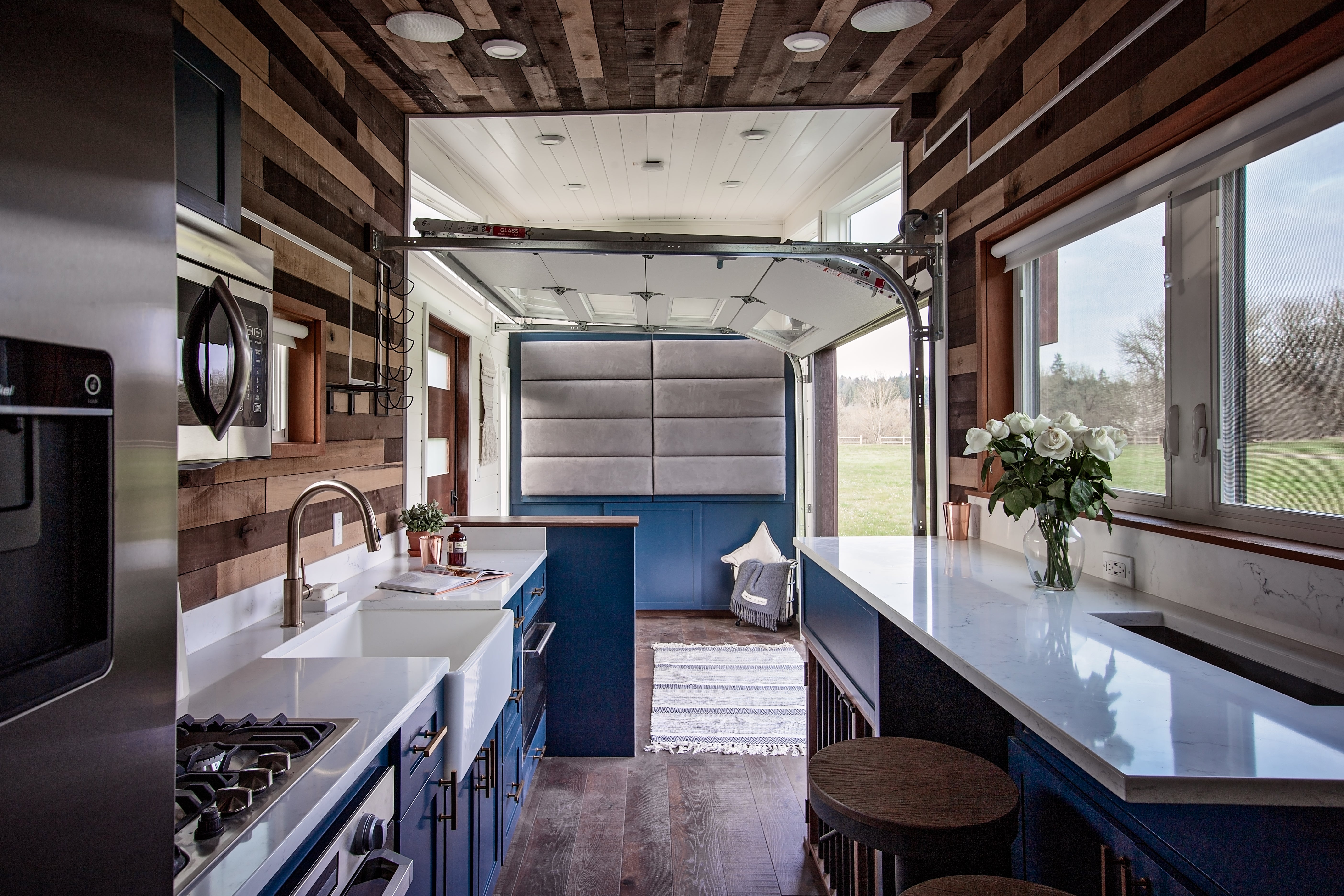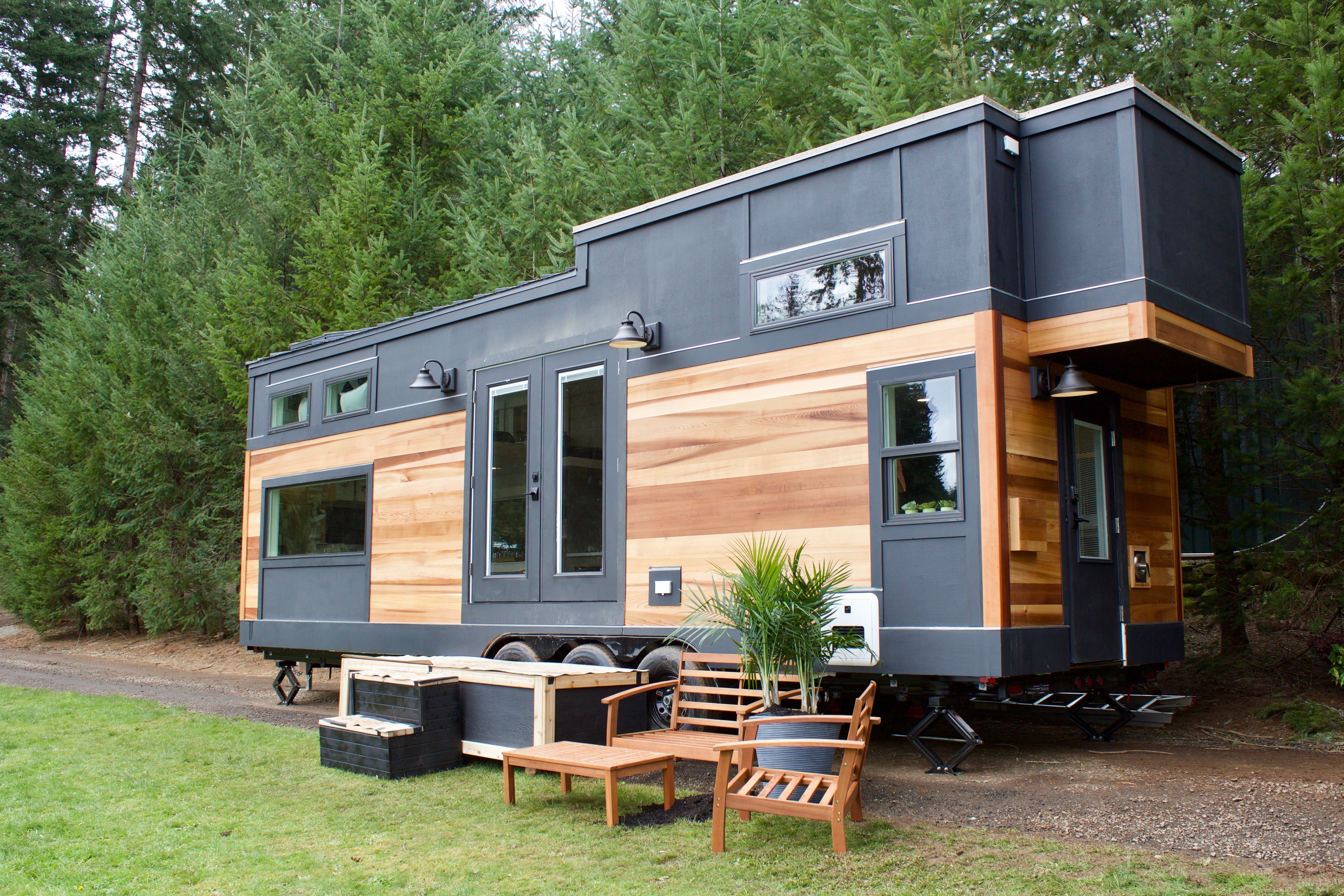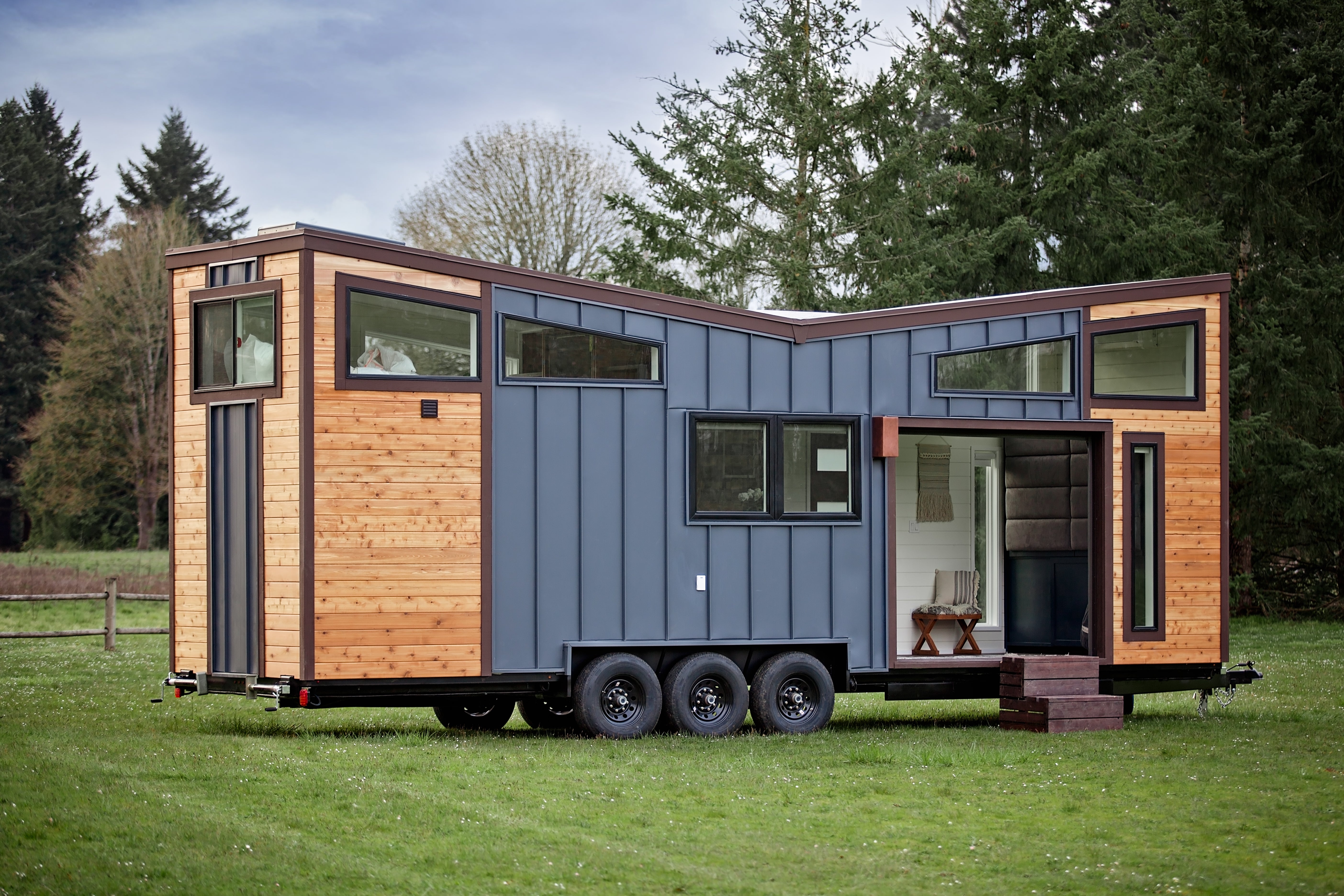Small outdoor spaces often get overlooked when it comes to design—especially in tiny home settings. But with thoughtful planning and a few clever tricks, even the most compact patios, decks, or balconies can be transformed into expansive, inviting retreats.
Whether you’re looking to sip your morning coffee in peace or entertain under the stars, it’s not about the square footage—it’s about visual flow, multifunctional innovative decoration design, and your ability to blur boundaries.
Here are five design tricks that make your small outdoor space feel larger, lighter, and much more livable.
1. Blur the Indoor-Outdoor Divide
One of the most powerful ways to expand a tiny outdoor space is to visually and physically connect it with your indoor area. When the transition between inside and outside feels seamless, both areas read as one larger, unified environment.
Design Tip: Install large glass doors (like sliding or French doors) or opt for accordion windows that open wide onto your deck. Use similar flooring materials—like composite wood-look tiles or concrete finishes—indoors and out to unify the two zones. Keep color palettes consistent across cushions, throws, and even wall finishes to strengthen this connection.
Pro Upgrade: Want to add a luxe feel while keeping cohesion? Try using Outerclè's pool tiles to bridge your indoor flooring with your outdoor space. Their textured finishes reflect light subtly and offer both beauty and slip-resistance—a win-win for small patios that double as sunning or plunge areas.
Expert Insight: According to spatial psychology research, the brain perceives fewer boundaries when design elements repeat, which increases the sense of openness. This simple alignment of texture and tone can add a surprising sense of “room” to your retreat.
2. Go Vertical: Think Walls, Not Just Floors
Limited floor space doesn't mean you're out of options—it just means you need to start thinking vertically. Walls, fences, railings, and even ceilings can be put to work, adding storage, greenery, and ambiance without eating up valuable floor area.
Design Tip: Consider a living wall (vertical garden) or wall-mounted planters to introduce lush greenery. Hang trailing vines like pothos or string-of-pearls to draw the eye upward. You can also hang lanterns or pendant lights to elevate visual interest.
Creative Hack: Install trellises or lattice panels as privacy screens that double as green backdrops for climbing plants like jasmine or clematis. This not only softens the look of hard boundaries but also gives a sense of enclosure without confinement.
Why It Works: Vertical elements pull the gaze up and away from square footage limitations—an age-old interior design trick that works just as well outdoors.
3. Use Mirrors to Multiply the View
Mirrors aren’t just for bathrooms or bedrooms. They’re a classic trick used by designers to double the visual space—and they work wonders outdoors. Reflective surfaces can bounce light around your patio and create the illusion of depth and openness.
Design Tip: Choose a mirror with a weatherproof frame and mount it on a fence or exterior wall, opposite your primary seating or greenery. Arched or windowpane-style mirrors can mimic architectural features and trick the eye into seeing an extended garden or “doorway” to another space.
Safety Note: Make sure your mirror won’t create a fire hazard by reflecting concentrated sunlight—particularly in sun-drenched patios.
Pro Perspective: "In small outdoor areas, mirrors function like portals," says Carla Mendez, landscape architect and founder of Urban Green Spaces Co. "They create a sense of discovery and scale that few other elements can match."

4. Opt for Multi-Functional and Low-Profile Furniture
Bulky, mismatched furniture can cramp your outdoor space both visually and physically. Choosing sleek, multipurpose pieces not only reduces clutter but also keeps sightlines open, making your patio or porch feel far more spacious.
Design Tip: Pick modular seating with built-in storage (great for hiding gardening tools or extra cushions). Use foldable or stackable chairs for flexibility. Benches with hidden compartments can line the perimeter while freeing up center space.
Visual Trick: Keep furniture low to the ground—this creates the illusion of higher ceilings or open sky above. Avoid high backs or chunky arms that block the eye and instead lean toward streamlined silhouettes.
Color Consideration: Match furniture hues to your outdoor surfaces or go tonal with your wall and cushion palette for a more harmonious, expansive look.
5. Layer Lighting for Depth and Warmth
Lighting plays a crucial role in how we perceive space, especially after sunset. Strategic illumination can add dimension, draw attention to vertical or distant elements, and extend usability into the evening.
Design Tip: Combine ambient (string lights, wall sconces), task (portable lanterns, solar lamps), and accent lighting (uplights under planters or steps). Path lights or subtle LED strip lighting can define edges and make the area appear longer or wider.
Mood Boost: Warm-toned lighting tends to create a cozy glow, making small spaces feel more inviting. Cool-toned lighting, on the other hand, can enhance the feeling of openness—great for ultra-modern patios or minimalist terraces.
Expert Takeaway: “Light layering is the unsung hero of outdoor design. With it, even a 6x8-foot balcony can feel like a boutique rooftop bar,” notes lighting designer Rachel Yuen of LightForm Studio.
Bonus Tips: Add Texture, Transparency, and Natural Touches
-
Choose transparent or slatted furniture (like acrylic chairs or wire-framed benches) to reduce visual bulk.
-
Incorporate soft textures—layer rugs, throws, and cushions to add warmth without visual clutter.
-
Embrace natural elements like wood, stone, and potted herbs to make your outdoor nook feel connected to its surroundings.
Final Thoughts
Designing a small outdoor space isn’t about limitations—it’s about maximizing potential. With clever spatial illusions, cohesive aesthetics, and intentional layering, your tiny porch or patio can become your favorite “room” of the house.
At tinyhouseplans.com, we believe that every square foot counts—and when it comes to outdoor living, creativity often beats size. So pull out that sketchbook, start planning, and transform your petite patch of earth into a place that feels like a private escape.






Share: